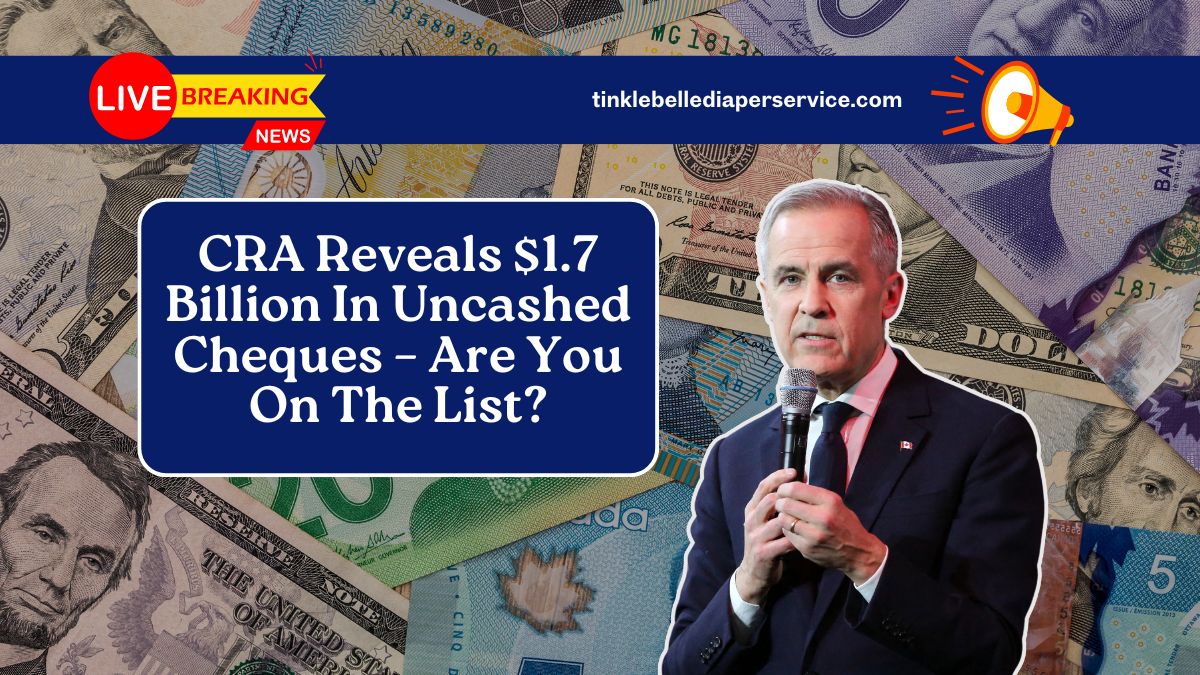The Canada Revenue Agency (CRA) has issued an alert that could mean extra money for millions of Canadians. As of March 31, 2025, the CRA is still holding on to $1.7 billion worth of uncashed cheques — a total of over 10 million payments that were never claimed.
If you’ve ever missed a payment or changed your address without updating the government, you could be on the list.
This article explains how to find out if you’re owed money, how to claim it, and what steps you need to take to prevent it from happening again.
Why Are There Uncashed Cheques from CRA?
The Canada Revenue Agency issues millions of payments every year for refunds, tax credits, and government benefits. However, not all cheques are cashed. Reasons include:
- The recipient moved and didn’t update their address
- The cheque was lost, misplaced, or forgotten
- The person switched to direct deposit after receiving a cheque
Since government-issued cheques do not expire, even old payments dating back to 1998 can be reissued once requested.
Breakdown of the $1.7 Billion in Uncashed Cheques
Here’s a summary of the uncashed cheque amounts still held by CRA as of March 2025:
| Cheque Category | Number of Cheques | Total Value Estimate |
|---|---|---|
| Under $1,000 | 10,036,240 | ~$1 billion |
| $1,000 – $99,999 | 189,840 | ~$700 million |
| $100,000 or more | 160 | Tens of millions |
| Total Uncashed Cheques | 10,226,240 | $1.7 billion |
How to Check If You Have an Uncashed Cheque
The CRA launched an online feature in 2020 through its My Account portal to help Canadians track down their missing payments. Here’s how to check:
- Log into your CRA My Account:
Visit https://www.canada.ca/en/revenue-agency.html and log in. - Navigate to the “Uncashed Cheques” section:
This section lists any payments Canada Revenue Agency issued that have not been cashed. - Review your history:
Cheques as far back as 1998 may appear.
How to Request a Replacement Payment
If you find an uncashed cheque, follow these steps to get your money:
- Fill out the “PWGSC 535 – Undertaking and Indemnity” form
This form is located within the “Uncashed cheques” section of your Canada Revenue Agency account. - Include the following:
- Your full name and address
- A witness signature from a non-family member
- Their full name and address
- Submit online or by mail to CRA.
Important: If the form is filled out incorrectly, CRA will send a new one for correction, which will delay processing.
Processing Time
Due to high volumes of requests, the CRA may take 8–10 weeks to reissue your cheque.
Success So Far: Canadians Are Reclaiming Their Money
According to the CRA:
- 4.5 million cheques have already been reclaimed
- Valued at around $1.6 billion by March 2025
This shows the initiative is working, but many Canadians still haven’t checked their accounts.
Avoid Missed Payments in the Future: Sign Up for Direct Deposit
The CRA is encouraging all Canadians to switch to direct deposit for faster and more reliable payments.
Benefits of direct deposit:
- No delays or lost cheques
- Instant access to tax refunds and benefits
- No paperwork required once set up
To register:
- Go to My Account
- Click on the Direct Deposit section
- Enter your banking information
With $1.7 billion in uncashed CRA cheques sitting unclaimed, it’s worth checking if some of that money belongs to you. The CRA My Account portal offers an easy way to check your status, and the process to reclaim your funds is straightforward.
To ensure you never miss a payment again, register for direct deposit today and keep your contact information up to date with CRA.
You might be sitting on money you didn’t even know was yours — don’t miss your chance to claim it.
FAQs
What types of payments could be uncashed?
These could include tax refunds, GST/HST credits, Canada Child Benefit (CCB), and other CRA-administered benefits.
Is there a deadline to claim these uncashed cheques?
No. CRA cheques do not expire. You can claim even decades-old payments if you follow the proper steps.
Can someone else claim the cheque on my behalf?
Only in special circumstances, such as through a legal representative with authorization. Otherwise, the form must be completed and signed by the person listed on the cheque.

